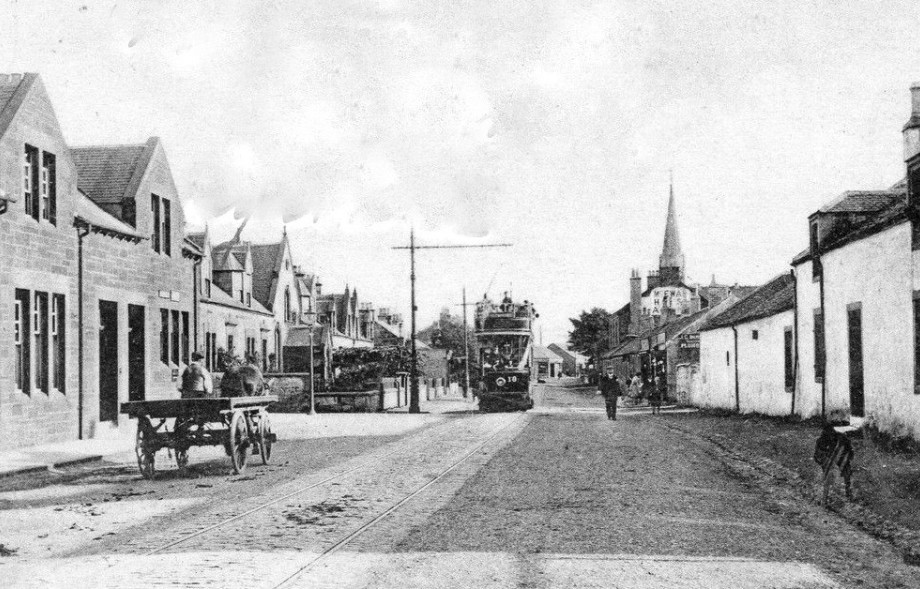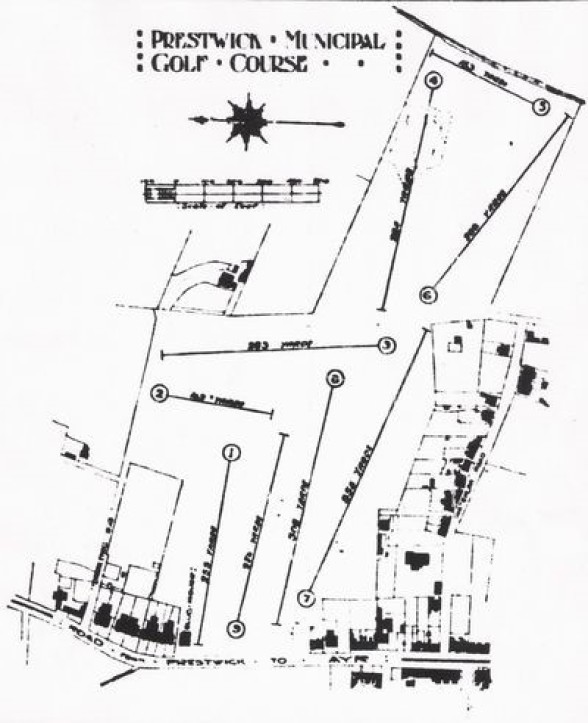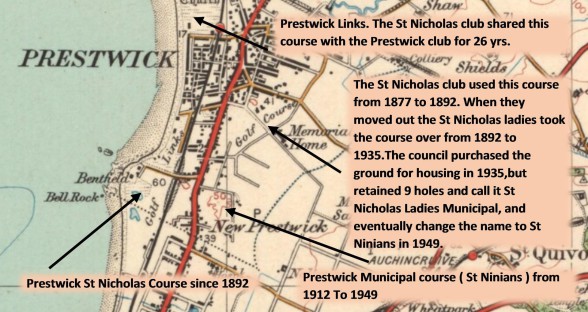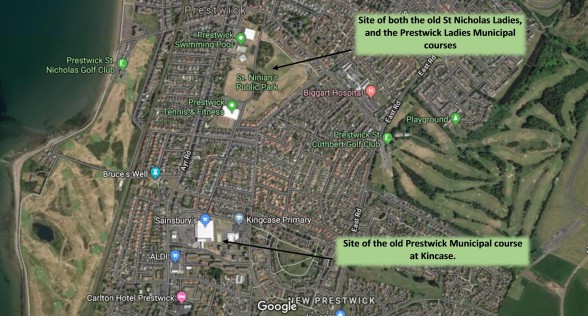
Prestwick Municipal
Scotsman November 29th, 1910
Prestwick Municipal Golf Course, Laid out 1912. “Although the rising burgh of Prestwick – the pioneer of golf on the West coast and the nursery of many fine golfers – has four first class courses, it is thinking of getting into line with Ayr, Rothesay, Troon, and other places in the West by providing a Municipal links. At present, signatures are being obtained in the town of those favourable to the project, and the matter will afterwards be brought before the town council. The ground in view is at Crandley Hill, on the East side of the tramway line, near Kingcase and landward of St Nicholas Links. Much of the land in the vicinity is of a thoroughly sporting nature, and it is high, dry, and sandy.” (S 29.11.1910)
Ayr Advertiser, June 6th, 1912
The Opening Of The Municipal Golf Course.
“The new nine hole course which has been laid out at Kingcase by Prestwick Town Council was formally opened on Saturday in presence of a large gathering. The course, which makes the fifth in Prestwick, has been planned and laid out by David Kinnell, the St Nicholas Club Professional, who has put the ground at his disposal - about 35 acres - to the very best use. The first hole is situated on a plateau, and requires a nice drive and accurate brassie play, the second shot being a grand sporting one. The second hole is a blind one, but it can be reached with a full iron shot. Going to the third, which is about 300 yards in length, there is a fine natural hill to the left, and a good iron shot is required to reach the green. An extra long drive might carry the fourth green, which is behind Crandleyhill, but the safe game will be to play to the right, and from that position the second shot should not present much difficulty. The fifth hole is a short one, but it requires to be carefully played, as a ditch has to be negotiated, and accurate approaching is essential. The sixth is at present situated in a flat field, but bunkers will be introduced later on. To the seventh, which is situated near to the Ayr Road, play is over grand natural golfing ground, and the approach shot requires to be carefully judged. The eighth is a particularly good hole, the line of play being over a natural dip in the land. A straight drive will send the ball into a hollow, but after that a mashie shot should find the green. The last hole requires accurate play, an old wall and some broken ground being there to punish the player who deviates ever so little.
A clubhouse has been erected according to plans prepared by Mr William Cowie, Architect, Ayr. It is designed on the bungalow principle, with verandahs on two sides, and as Ex-Provost Weir indicated at the opening ceremony, is only part of a larger scheme which will be developed should the present venture prove a success, and an extension to the course to 18 holes be required.
At the opening ceremony, which was largely attended, Ex-Provost Weir presided, and Provost Edmiston, in calling upon Mrs Weir to open the course, presented her with a silver mounted cleek with which to drive the first ball. Thereafter, an exhibition fourball game was played by Messrs James Robb (Ex- Amatuer Champion) and John Thomson, Prestwick St Nicholas, and D. McCulloch and W. Gibson, Prestwick St Cuthberts.” (AA 6.6.1912)
Ayr Advertiser May 23rd, 1929
“To mark the opening of the reconstructed municipal golf course an exhibition game was played on Saturday. The players were J. Thomson and J. Brock V A. Raeside and A. Gibson, the match ending in favour of the latter by 3 and 1. The alterations, which included the varying of the “ layout” of some parts of the course and the inclusion of several difficult and tricky bunkers, should add greatly to the attraction of this already popular course.” (AA 23.5.1929)
Prestwick Council Minutes show that in December 1949 the Scottish Home Department were prepared to reimburse the town council in respect of the clearance of the site forming part of the old municipal golf course which had been requisitioned during the war and on which temporary defence works, including huts, had been built. A number of tenders for the work were receive and one, amounting to £981.0.6d, was selected and passed to the Home Department. However, in January 1950, the Home Department intimated that due to necessary economies, it could not accept the tender, but that it would be kept under review and work allowed to proceed as soon as circumstance permitted.


